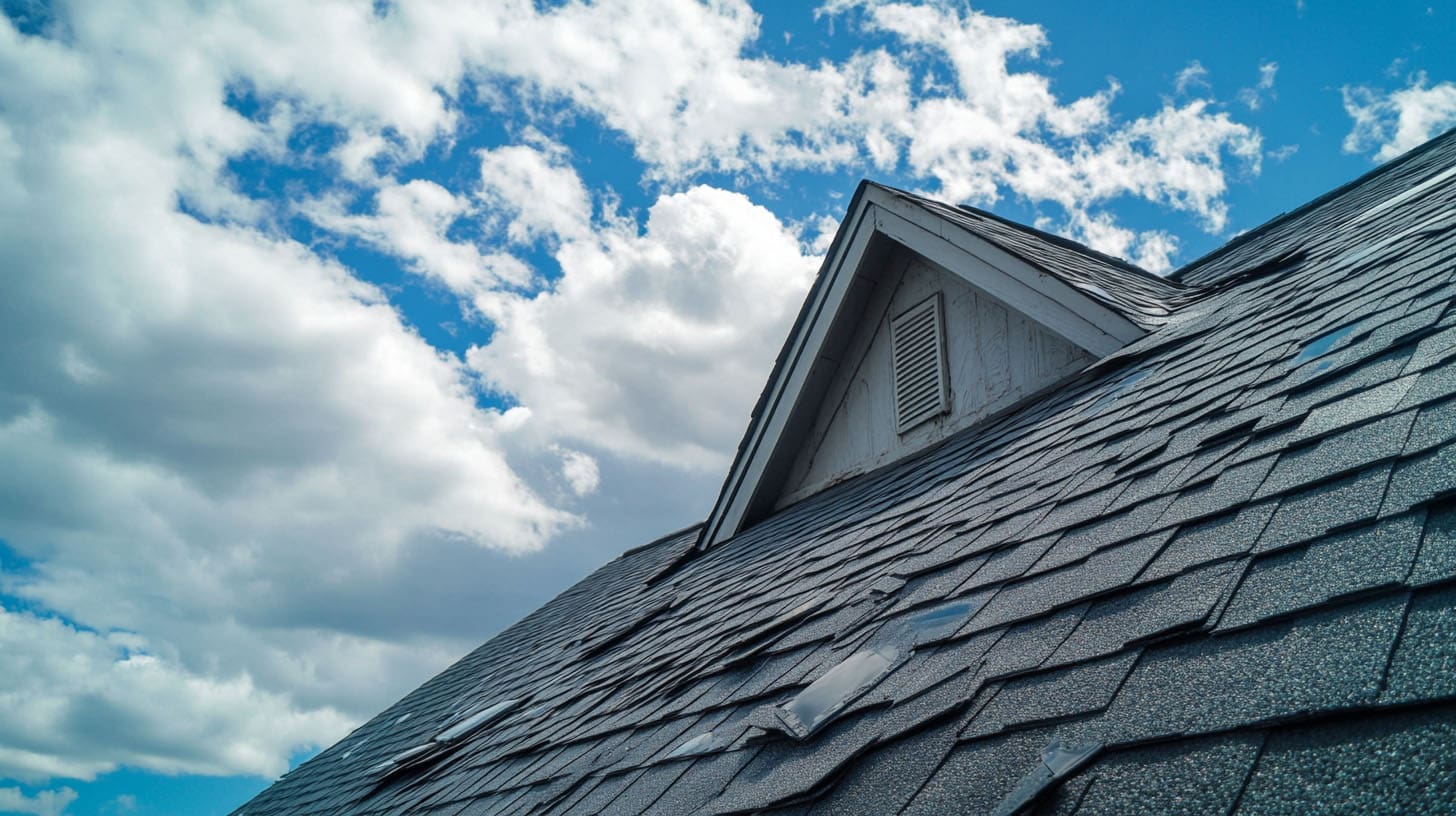
Filing a roof insurance claim can seem daunting, but it’s essential to restore your property and prevent further issues. At All Phase Construction USA, LLC in Deerfield Beach, FL, we are proud to be a Certified General and Roofing Contractor, as well as an Owens Corning Platinum Contractor and Certainteed Master Contractor. From addressing missing shingles to mitigating water damage, your insurance policies can offer coverage for significant repairs or replacements. Understanding the process thoroughly ensures you take the correct steps and avoid unnecessary costs.
Understanding Storm Damage to Roofs
Understanding the impact of storms on roofs involves recognizing the various types of damage that can occur. Wind damage often leads to missing shingles or roof tiles, while hail can create dents and punctures, resulting in water damage. Assessing the extent of the damage is crucial for the insurance claim process, as this directly influences the claim settlement. Moreover, understanding the age and condition of your roof helps determine the most likely path for repair or replacement under your homeowners insurance policy.
Types of Roof Damage Caused by Storms
Understanding the various types of roof damage is crucial for homeowners facing the aftermath of a storm. Common types of roof damage include missing shingles, which can expose the underlying layers to further water damage, and hail damage that creates dents and cracks in roofing materials. Wind damage may cause entire sections of a roof to become compromised, while debris impact can lead to significant structural issues. Recognizing these signs early can vastly improve the chances of a successful roof damage claim.
Signs of Storm Damage on Your Roof
Detecting signs of storm damage promptly is crucial to initiating the roof damage insurance claim process. Look for missing shingles, cracked tiles, or granules in your gutters, as these indicate potential roof compromise. Other red flags include leaks or water stains inside your home, suggesting that water damage has begun to infiltrate. Observing any visual disruptions on your roof after a storm can help clarify the extent of the damage, enabling you to support a potential claim with the necessary documentation.
Initial Steps to Take After Storm Damage
Begin by prioritising your safety and inspecting your roof cautiously for visible damage, such as missing shingles or fallen debris. Avoid climbing on the roof immediately; instead, conduct a perimeter inspection from the ground and check ceilings and walls for leaks or stains.
Next, document the aftermath thoroughly for your insurance claim process. Take photographs and make detailed notes about property damage. These initial steps streamline the claim process, ensuring your insurance company receives accurate data to proceed with coverage evaluation.
Safety First: Inspecting Your Roof Safely
Conducting an inspection of your roof after a storm is crucial, but safety must always come first. Utilizing a stable ladder is essential, ensuring it’s set on solid ground to prevent slippage. When assessing for missing shingles or water damage, wear protective gear and avoid leaning too far over the edge. Consider employing a public adjuster or experienced contractor to assist in the inspection. Taking preventative measures during your assessment can protect you from further damage and provide peace of mind.
Documenting the Damage for Insurance Claims
Proper damage documentation strengthens your roof insurance claim. Start with high-resolution photographs capturing shingles, gutters, skylights, and surrounding property damage. Record the series of affected areas clearly.
Maintain written records of visible roof damage. For instance, note the count of missing shingles, cracks, or detached roof structures. Specify the types of roof damage observed.
Contacting Your Insurance Company
Once damage is thoroughly assessed, initiate contact with your insurance company. Share detailed records, including photographs and written descriptions, to support your claim. Communicating promptly prevents delays in processing.
Your insurance provider will assign an adjuster to inspect the damage and clarify coverage details under your home insurance policy. Establishing clear contact upfront safeguards your case and allows adequate preparation for future actions in the claim process.
How to Contact and What Information to Provide
Reaching out to your insurance provider after storm damage requires diligence. Mention critical details such as your policy number, the nature of roof damage, and supporting documentation.
When communicating, be specific about extent of the damage. Avoid estimating costs; focus on describing observable issues like missing shingles or cracks. Include photos to eliminate ambiguities.
Finally, ask for instructions regarding the appraisal and inspection processes. Knowing what details your insurance company needs simplifies interactions and sets the stage for successfully addressing your roof damage claim.
Understanding Your Policy’s Coverage for Roof Damage
Review your insurance policy thoroughly to understand its scope. Check if coverage extends to storm-related repairs, including wind or hail damage. Policies vary—some exclude older roofs under normal wear clauses.
Next, differentiate between replacement cost coverage and actual cash value coverage (ACV). RCV provides higher payouts, covering complete replacement regardless of your roof’s age, while ACV subtracts depreciation.
Equally vital is knowing your deductible. Ensure your claim process accounts for this amount before coverage is applied. Familiarity with terms empowers effective communication with your insurance company and reduces potential out-of-pocket expenses.
The Inspection Process with an Insurance Adjuster
An insurance adjuster evaluates the extent of roof during their inspection. Their findings play a critical role in settling your claim. Prepare thoroughly by ensuring the adjuster has clear access to damaged areas.
Understand the terms of your policy before their visit. Familiarize yourself with required preventative measures and any repair deductions. Proper preparation enhances smooth proceedings for your roof insurance claim, enabling effective collaboration toward claim settlement.
Preparing for the Adjuster’s Visit
Advance preparation before an insurance adjuster visit fosters confidence. Gather prior documents, including photos and contractor estimates. Highlight key damage areas for the adjuster to review.
Understanding your policy deductible beforehand ensures you’re ready for associated costs. Discuss preventative measures taken immediately after the storm—covering exposed sections with tarps—showing efforts to limit further losses.
Waiting until assessments conclude allows the adjuster to recommend suitable resolutions. Strong preparation ensures a smooth process that aligns with your roof insurance claim objectives.
What to Expect During the Adjuster’s Inspection
During the adjuster’s inspection, expect a thorough assessment of your roof’s condition. The adjuster will evaluate various factors, including the extent of the damage, types of roof damage, and the age of your roof. Will compare observed damage against your insurance policy’s coverage details, such as replacement cost versus actual cash value. This evaluation is crucial for determining the viability of your roof insurance claim, potentially impacting the claim settlement amount. Be prepared with documentation and detailed notes for the discussion.
Choosing a Qualified Roofing Contractor
Selecting experienced roofing contractors after storm damage ensures high-quality restoration. Look for those who specialize in working with insurance claims—streamlining coordination for documentation and repair approvals.
With certifications like Owens Corning Platinum Contractor and TRI Partner, All Phase Construction USA, LLC provides reliable services tailored to your needs. A trustworthy contractor guarantees proper repairs, safeguarding your home against secondary damage.
Importance of Selecting Certified Contractors
Certified contractors bring expertise that makes them indispensable during storm restoration. Come equipped to provide materials necessary for long-lasting repairs, often working with brands like GAF and Certainteed.
These professionals are familiar with insurance requirements, ensuring claims meet precise standards. Prevent underfunding risks by negotiating fair estimates for repair costs, avoiding insurer-biased low-cost alternatives.
Peace of mind stems from choosing licensed experts, prioritizing your roof’s long-term durability. Certification serves as a guarantee of your contractor’s capability to handle every aspect of the claim process correctly.
All Phase Construction USA, LLC’s Certifications and Expertise
Residents in Deerfield Beach, FL, find exceptional roofing solutions with All Phase Construction USA, LLC. Our stellar qualifications, including being a Certified General Contractor and Owens Corning Platinum Contractor, assure industry-standard results.
Working alongside Owens Corning, Carlisle, and Soprema, we deliver restoration tailored precisely to damage variations. Whether it’s small leaks or significant restorations, our expertise leads to long-lasting outcomes with minimal disruption.
Trusting All Phase Construction USA, LLC grants unparalleled peace of mind. Our commitment to quality ensures you receive the best way to address storm efficiently.
Connect With Us
Navigating the complexities of a roof insurance claim after storm can be daunting. Understanding the specific insurance coverage in your home insurance policy is crucial, as it directly impacts the claim process and potential settlement. At All Phase Construction USA, LLC in Deerfield Beach, FL, we collaborate with experienced contractors who can guide you through this process. Being proactive in documenting the damage enhances your chances of a successful claim. Ultimately, this approach not only safeguards your investment but also provides peace of mind, ensuring your home remains a safe and secure haven for you and your family.
Frequently Asked Questions
How long do you have to file a roof claim after a storm?
Typically, your insurance provider specifies deadlines within their policies for filing a roof claim. This timeframe can range from weeks to months. Consult your policy’s terms immediately after you notice storm damage to learn your next step and avoid complications with delayed claims.
What not to say to a roof insurance adjuster?
Avoid admitting that your roof was in poor condition or providing unnecessary additional information about past maintenance issues. Stick to discussing the visible roof claim, focusing on storm-related concerns. Keep conversations clear and oriented toward the claim process.
Is it worth claiming roof damage on insurance?
Filing an insurance claim for roof damage is often worthwhile, particularly when covered under homeowners insurance. Whether it’s repairing partial harm or seeking roof replacement, claims shield property owners from the financial burden of repairs, factoring in the depreciated value of your roof.
Read our blog: The Role of Roof Pitch in Water Drainage and Design
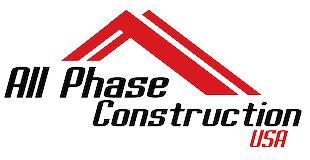

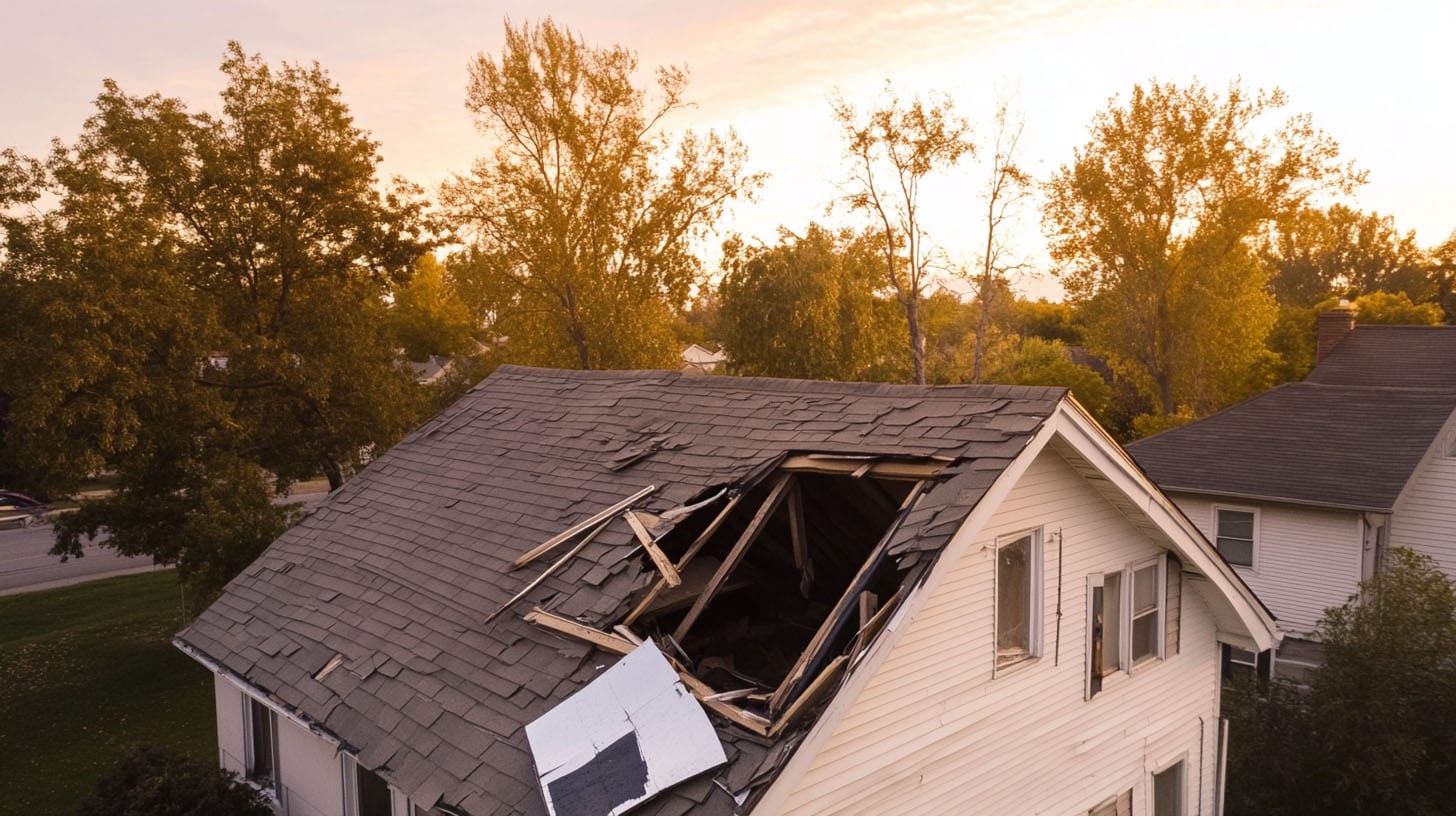
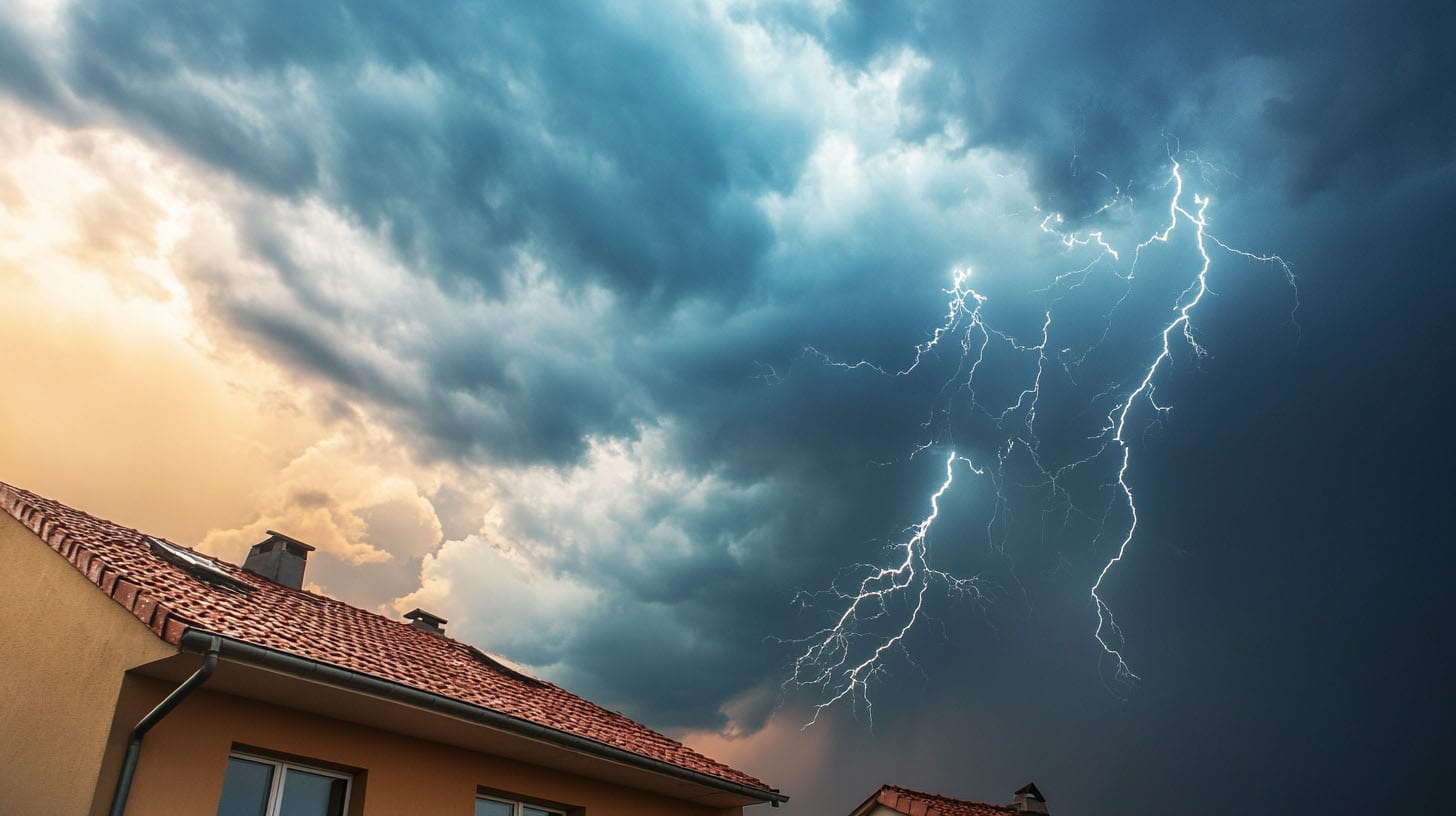
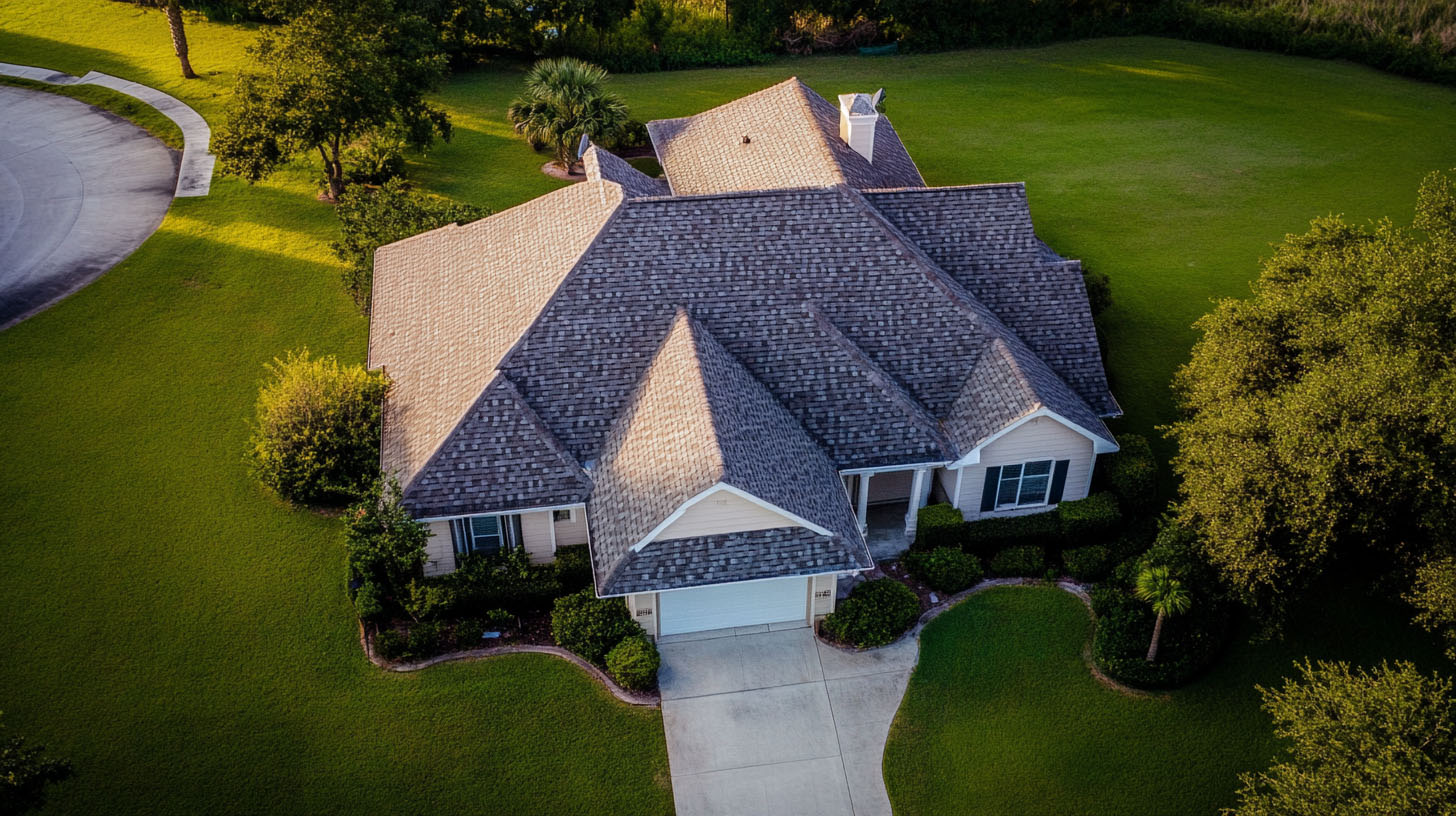

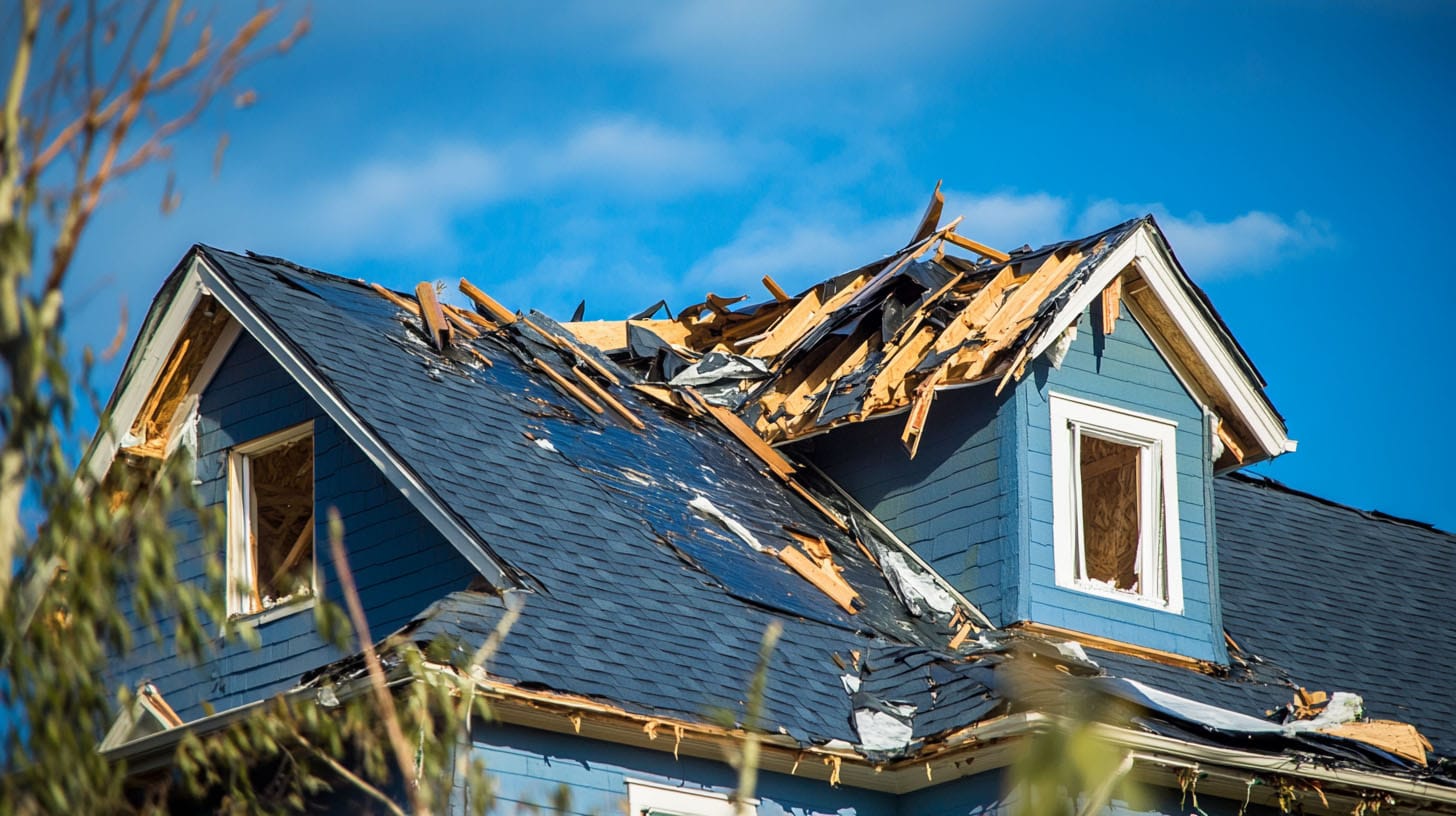
Sorry, the comment form is closed at this time.